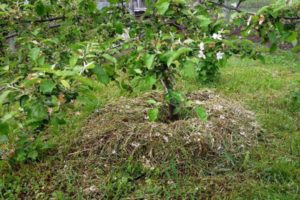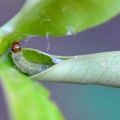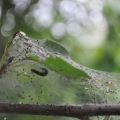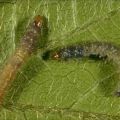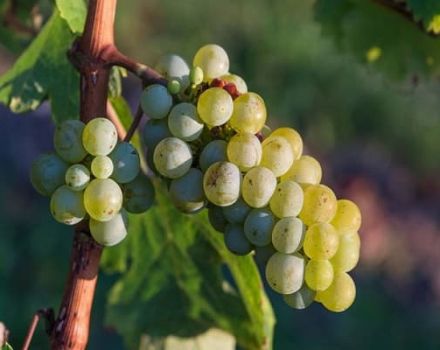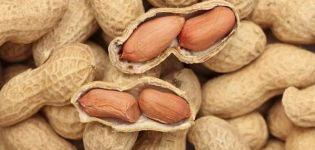Folk and chemical methods of dealing with silkworm caterpillars on apple trees, prevention
Each summer resident expects to receive as much high-quality harvest as possible from his garden, putting in a lot of effort. After planting, the seedlings are cared for and nourished. And the long-awaited harvest has to wait several years. But caterpillars can darken the joy of the first fruits. Very often, the silkworm settles on an apple tree and immediately begins to eat buds, flowers, leaves and damage the fruits. Therefore, every gardener should know the methods of pest control.
Description of the pest
Numerous pests are dangerous to the garden. The most dangerous for apple trees is the silkworm. Adults are adults, do not harm plantings. The female lives for only a few weeks. During this period, it manages to lay about a thousand eggs. Egg clutch is not afraid of frost, therefore, embryos are actively formed in winter. Caterpillars appear in the spring. They are the ones that pose a great threat to plantations and are able to migrate long distances. Caterpillars are very voracious and eat up most of the tree:
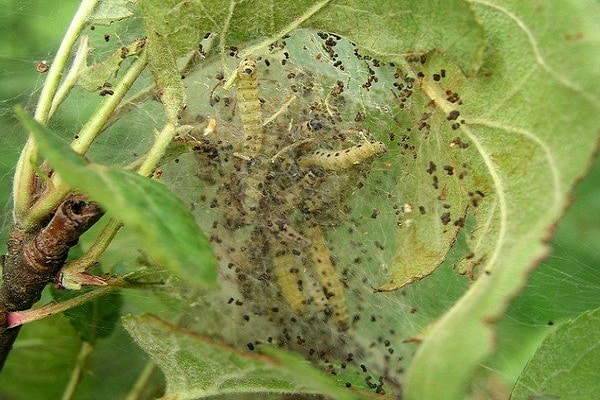
- kidneys;
- leaves;
- flowers;
- fruit;
- some individuals eat the bark.
Only after hatching, the larva is covered with small fluffs with a large number of bubbles. Due to this, gusts of wind can easily transfer the pest to a distance. In a month, one hundred larvae can damage most of the plant, so you need to start the fight right away.
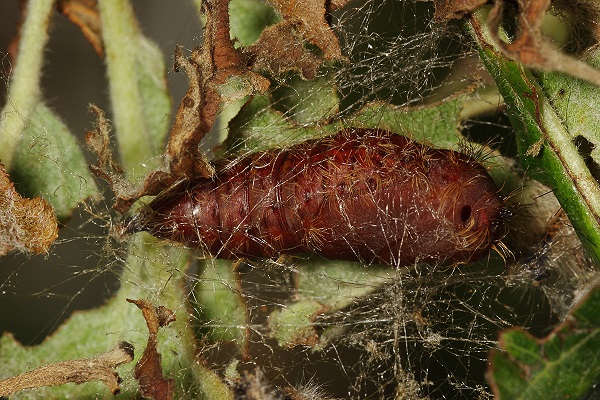
Description:
- The butterfly's wings are colored brownish-yellowish. Their span is 3.2-4.2 centimeters.
- The maximum track length is 5.5 centimeters. The color is bluish gray with white, blue and orange stripes along the body.
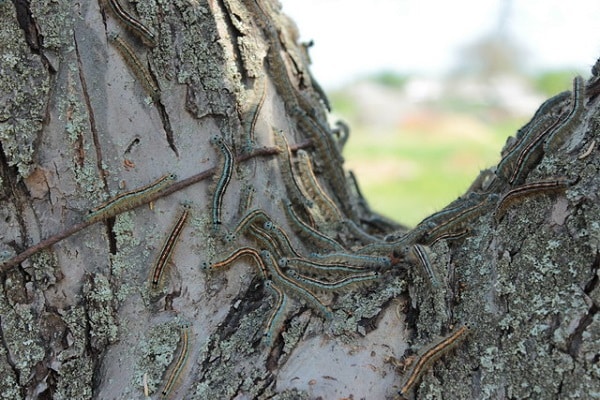
How to fight: methods
The silkworm on the apple tree is very dangerous. The best control measure is prevention. Correct measures help protect plants from pests. Methods:
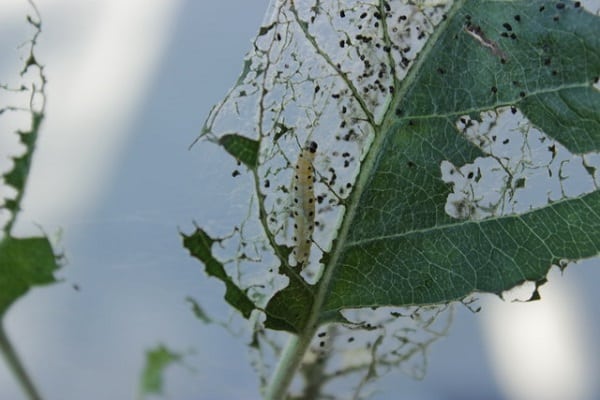
- Mechanical removal of masonry. This is the easiest way. To do this, the plantings are periodically inspected, checking for the presence of nests. Found laid eggs are scraped out and burned. You can also bury them in the ground to a depth of more than half a meter. It is necessary to remove clutches with gloves, as there are hairs on the surface of the eggs that can cause allergies.
- Another effective measure is caterpillar harvesting. To do this, glue traps are wrapped around the barrel. Caterpillars, moving around the plant, fall into a trap from which they cannot get out. You can also pick up insects by hand. Gloves must be worn before the procedure. Pest hairs can cause sores and redness.
- For prevention, old apple trees are treated with active compounds. This method is not recommended for young plantings.
- During the flowering period, cocoons are destroyed. This prevents the emergence of adults, which as a result reduces the population.
- Spraying with insecticides. A better and more efficient way has not yet been invented.
How to deal with pests, everyone decides for himself. To select the optimal method, it is necessary to consider in more detail the effective options.
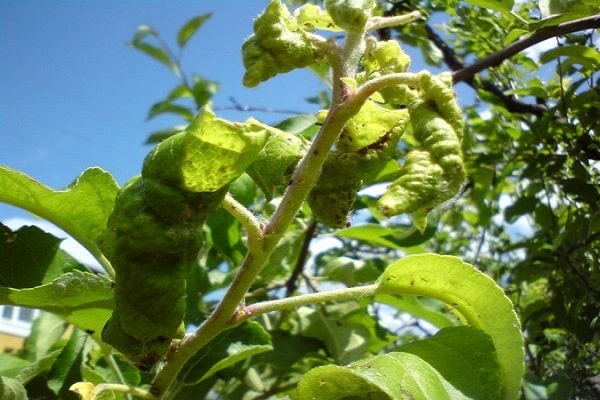
Biologicals
Use:
- "Dendrobacillin". A fast-acting remedy, the duration of which is limited to a few hours.
- "Lipidocide". Sprayed during the growing season. The interval is 8 days. A maximum of 5 liters is consumed per adult plant.
- "Entobacterin". It can be used at temperatures from +20 degrees and above.
- "Bitoxibacillin". Sprayed at intervals of 8 days during the growing season. It is prohibited to process during the flowering period.
The listed preparations are suitable for treating plantations during the period when caterpillars appear. It is imperative to re-process 8 days after the first treatment.
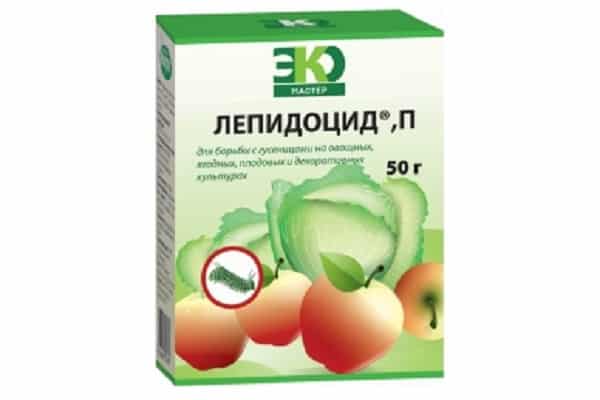
Insecticides
If the plantation is massively attacked by pests, then insecticides will help to cope:
- "Zolon";
- "Antio";
- "Metation";
- "Karbofos";
- Phosphamide.

The proposed preparations are treated when the caterpillars begin to rise into the crown and after the end of the migration of insects. At the time of flowering, processing is prohibited, since the chemical is harmful to beneficial insects that pollinate the inflorescences.
At the beginning of the spring period, it is allowed to process "Verin-ENZH". It belongs to viral drugs and is not suitable for use at the time of fruit formation. Until the appearance of the kidneys, Nitrafen is used.
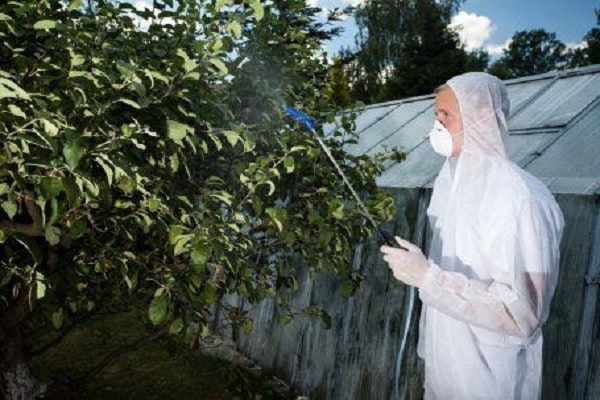
Traditional methods
At the time of fruit setting and ripening, it is recommended to use harmless control options. Best practices:
- Coniferous concentrate is used to scare away. To do this, add 4 tablespoons of the concentrate to a 10-liter bucket of water. It is allowed to spray several times. They also use an infusion of rotten hay, mustard, wormwood, and tomato tops.
- If pests have settled in the crown, then a strong stream of water will help knock them off the plant. Then the insects are collected from the ground and destroyed.
- Birds effectively destroy silkworms. To attract more birds to the site, birdhouses are placed on the territory.
To preserve the plantings, it is important to detect silkworms in time and take the necessary measures.

